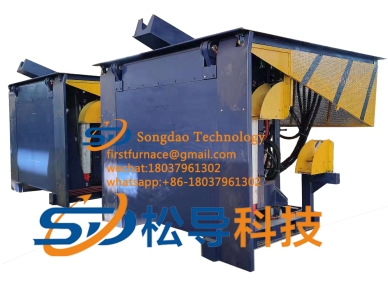- 28
- Jul
The data that induction heating furnace needs to control in forging
- 28
- జూలై
- 28
- జూలై
The data that induction heating furnace needs to control in forging
1. The purpose of the initial forging temperature of the induction heating furnace heating the blank is to increase the temperature of the forged blank, so that the carbon and nitrogen compounds of V, Nb and Ti can gradually dissolve into the austenite, and a large amount of dissolved microalloyed carbon and nitrogen compounds Precipitation during the cooling process can improve the strength and hardness of the steel; on the other hand, as the temperature increases, the austenite grains grow, the structure coarsens, and the toughness decreases.
2. The purpose of the final forging temperature for heating the blank in the induction heating furnace is to properly control the lower final forging temperature, which can increase the degree of grain breakage, increase the number of grain boundaries, effectively generate deformation-induced precipitation and disperse particles, and at the same time, the driving force of recrystallization is small. , grain refinement, is conducive to improving toughness.
3. The deformation amount and deformation rate of the blank heated by the induction heating furnace are also for the fragmentation of the austenite grains of the blank, and the recrystallization of the austenite coarse grains into fine grains. The fine phase transformation structure of ferrite is evenly distributed in the structure, which is beneficial to improve the toughness of steel.
4. The post-forging cooling rate of the heated blank in the induction heating furnace has a great influence on the performance of the forging, which is the key to ensuring the metallographic structure and mechanical properties of the forging. Since the phase transformation during the cooling process is complex, natural cooling cannot effectively control the non-quenching and tempering. The quality of the steel should be provided with a cooling device that is not affected by the season. In fact, the control of cooling at 800 ° C ~ 500 ° C has an effect on the strength and toughness of the steel, and cooling outside this range is not important. The optimal control of the cooling rate directly affects the metallographic structure and mechanical properties of the forgings, so it should be based on different non-quenched and tempered steels to find the appropriate post-forging temperature-controlled cooling rate through experiments.
At present, the data that needs to be controlled in the forging of the induction heating furnace is more and more widely concerned and valued by the enterprises. Only by really paying attention to the heating temperature of the induction heating furnace can the normal forging be ensured, the forging production efficiency can be improved, and the production cost can be reduced.

